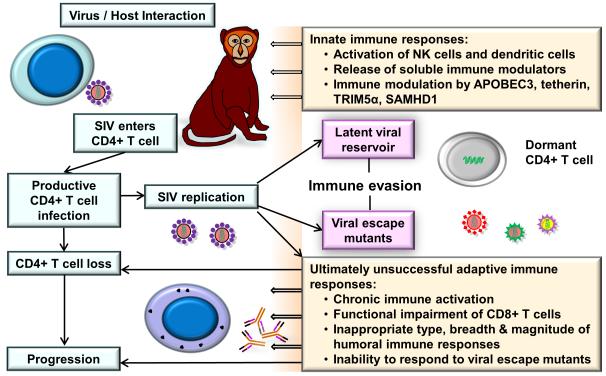FIGURE 1.
Key aspects of SIV immunopathogenesis. Successful pathogenic infection with SIV typically results in a progressive loss of CD4+ T cells. The interaction of SIV with the host’s immune system triggers innate immune responses followed by virus-specific adaptive cellular and humoral immune responses. Rapidly occurring mutations lead to immune evasion. Already early following infection, viral reservoirs are being established that protect the virus from immune control. Chronic immune activation contributes to the functional impairment of the immune system. As the disease progresses, adaptive immune responses are unsuccessful in containing the virus replication, and overt signs of a chronic immune suppression become evident.

